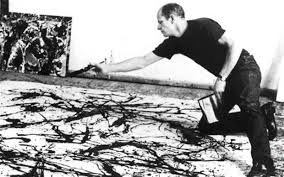more on the controlled aspect –
much of the process of (creative and original) painting is pre-conceptual and/or pre-
rational, some aspects might be rational, the result of thinking, planning, reflection
and most definite will be the result of previous experience (both experience outside
the discourse of painting as well as experience the artists developed in the discourse
of painting) of the artist.
Experience outside the discourse of painting, or experience that are not directly
linked to the process of painting could include anything in the reality and life of
the artist. It also refers to that what is perceived by the different senses, the
results of reflection on such perceptions and the structures of perception that
are employed by human beings for perception by their senses and by reflection on
perceptions, thinking and talking about or communication of such perceptions and
reflections.
All this information, knowledge, understanding, insights and wisdom developed by the
artist forms part of or constitute his ‘experience’. These things playa role in
the pre-conceptual and pre-rational consciousness or awareness of the artist as well
as in his conceptual and rational thinking, understanding and expression or awareness
and consciousness.
All these things are referred to the controlled aspect. In other words when Richter
(with his squeegee) , Pollock (with his drippings), etc appear to be working in
an accidental (uncontrolled) manner, their actions are ‘controlled’ and informed
(based upon and informed) by all their previous experience, and more specifically
by selected, relevant aspects of that experience that constitutes the mind set,
style, life world and reality of the artist at that point in time. Therefore, even if
his activities might appear to be accidental, a controlled aspect do play a part
in his painting.
—-







You must be logged in to post a comment.